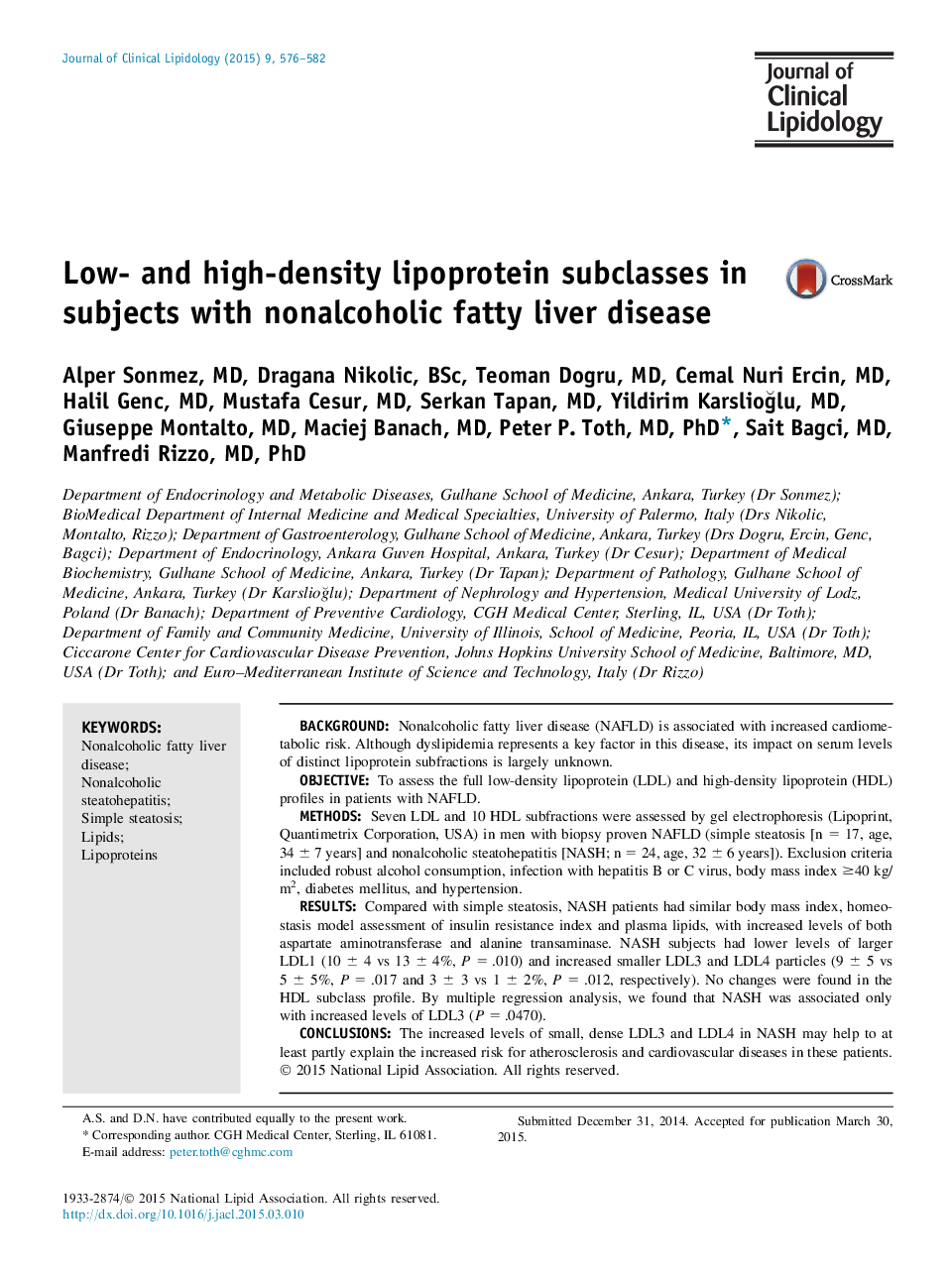| کد مقاله | کد نشریه | سال انتشار | مقاله انگلیسی | نسخه تمام متن |
|---|---|---|---|---|
| 5985773 | 1178779 | 2015 | 7 صفحه PDF | دانلود رایگان |
- Nonalcoholic fatty liver disease is associated with changes in the low-density lipoprotein (LDL) profile.
- Subjects with nonalcoholic steatohepatitis had increased small dense LDL (sdLDL) particles.
- sdLDLs correlate negatively with triglycerides and inversely with high-density lipoprotein cholesterol.
- Young age and the early stage of NASH may explain the lack of correlation with other factors.
- Increased sdLDL may potentiate progression of both liver and cardiovascular disease.
BackgroundNonalcoholic fatty liver disease (NAFLD) is associated with increased cardiometabolic risk. Although dyslipidemia represents a key factor in this disease, its impact on serum levels of distinct lipoprotein subfractions is largely unknown.ObjectiveTo assess the full low-density lipoprotein (LDL) and high-density lipoprotein (HDL) profiles in patients with NAFLD.MethodsSeven LDL and 10 HDL subfractions were assessed by gel electrophoresis (Lipoprint, Quantimetrix Corporation, USA) in men with biopsy proven NAFLD (simple steatosis [n = 17, age, 34 ± 7 years] and nonalcoholic steatohepatitis [NASH; n = 24, age, 32 ± 6 years]). Exclusion criteria included robust alcohol consumption, infection with hepatitis B or C virus, body mass index â¥40 kg/m2, diabetes mellitus, and hypertension.ResultsCompared with simple steatosis, NASH patients had similar body mass index, homeostasis model assessment of insulin resistance index and plasma lipids, with increased levels of both aspartate aminotransferase and alanine transaminase. NASH subjects had lower levels of larger LDL1 (10 ± 4 vs 13 ± 4%, P = .010) and increased smaller LDL3 and LDL4 particles (9 ± 5 vs 5 ± 5%, P = .017 and 3 ± 3 vs 1 ± 2%, P = .012, respectively). No changes were found in the HDL subclass profile. By multiple regression analysis, we found that NASH was associated only with increased levels of LDL3 (P = .0470).ConclusionsThe increased levels of small, dense LDL3 and LDL4 in NASH may help to at least partly explain the increased risk for atherosclerosis and cardiovascular diseases in these patients.
Journal: Journal of Clinical Lipidology - Volume 9, Issue 4, JulyâAugust 2015, Pages 576-582
